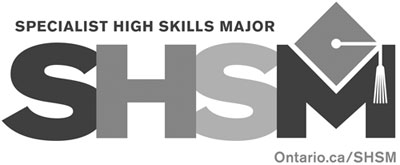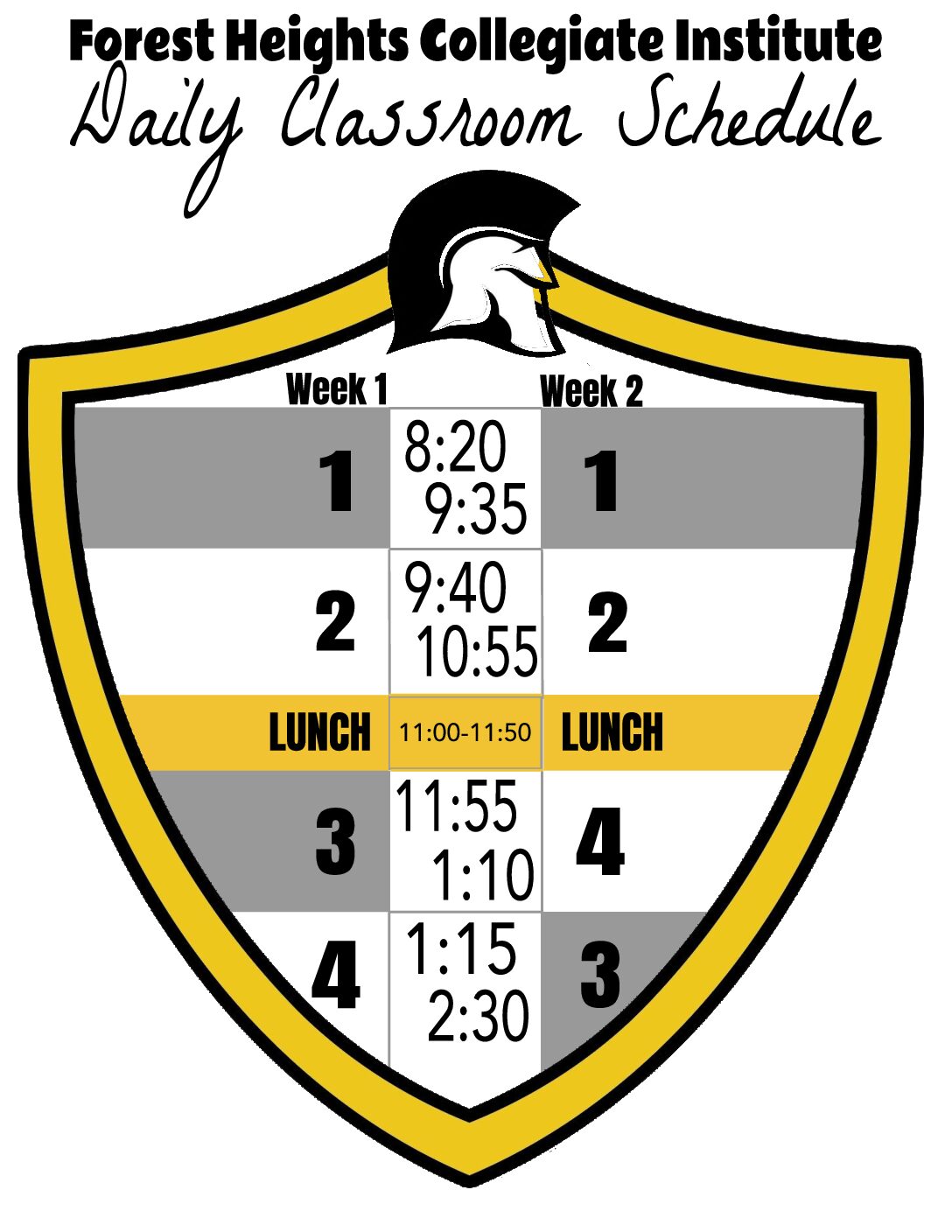
What is a Specialist High Skills Major?
What are they?
Specialist High Skills Majors let students focus on a career path that matches their skills and interests while meeting the requirements of the Ontario Secondary School Diploma (OSSD). Students receive the SHSM seal on their diploma when they:
- complete a specific bundle of 8-10 courses in the student’s selected field
- earn valuable industry certifications including first aid and CPR qualifications
- gain important skills on the job through cooperative education placements.
Who is it for?
Grade 11 and 12 students who:
- Are planning a pathway to an apprenticeship, college, university, or into the workplace.
- Want to identify, explore and refine their career goals and make informed choices about their next steps after secondary school.
What does an SHSM do for students?
Pursuing an SHSM enables students to:
- gain important skills on the job with actual employers, at skills training centres and at school
- earn valuable industry certifications, including first aid and CPR qualifications.
Students who successfully complete an SHSM receive:
- an Ontario Secondary School Diploma with an embossed red seal
- an SHSM Record documenting his/her achievement
- formal recognition on his/her Ontario Student Transcript
At Forest Heights Collegiate Institute, an SHSM is available in the following sector: Arts and Culture and Transportation.
Check out some videos on the SHSM program
Promo Video Details and Components
SHSM Arts and Culture
Get a jump-start on your career
A Specialist High Skills Major allows you to focus on a career area that interests you while you earn your high school diploma. No matter what education you plan to pursue after high school—apprenticeship, college, university or workplace training—an arts and culture major can help you focus on a future career.
A Specialist High Skills Major in arts and culture offers:
- high school courses in grade 11 and 12 tailored to the career you want to pursue
- the chance to work with industry leaders and experience cutting-edge training in arts and culture
- experience working in the sector you’re interested in, while you’re still in high school
- the opportunity to use the Ontario Skills Passport to develop skills and work habits that are required in the arts and culture sector
- recognition on your high school diploma
The arts and culture major includes the following components:
- In the arts and culture major, you will take 8 credits in grade 11 and 12:
- four arts and culture major credits
- two other required credits from the Ontario curriculum, in English and a choice of business studies or Canadian and world studies
- two co-operative education credits to gain workplace experience that helps you refine, extend and practice your arts and culture knowledge and skills
- Sector-recognized certifications and/or training courses/programs
- Experiential learning and career exploration activities within the sector
- Reach ahead experiences connected with the student’s postsecondary plans
- Completion of a Sector-Partnered Contextualized Experience
Sector-recognized certification and training
As part of the arts and culture major, you will earn seven certifications, including the following three that are compulsory:
- standard first aid
- CPR, level A
- hazardous materials – Workplace Hazardous Materials Information Systems (WHMIS)
Future career paths for arts and culture majors
For arts and culture majors, possible careers include:
- apprenticeship – entertainment industry power technician, gem setter/goldsmith, clothing and crafts artisan, painter and decorator, patternmaker
- college – actor, comedian, animator—graphic design and illustration, announcer, apparel production supervisor, artisan or craftsperson, broadcast technician, film or video camera operator, graphic arts technician, interior designer, photographer, fashion designer, video recording technician
- university – author, writer, conductor, composer, conservator, curator, dancer, painter, sculptor, producer, director, choreographer, public relations, communications
- entry level workplace – camera operations, plate making, desktop publishing operator, graphic artist or illustrator, musician, singer, photographic film processor, sign maker, textile colourist, weaver, knitter
Get more information
Call the guidance department at the following schools that offer the program:
SHSM Transportation
Get a jump-start on your career
A Specialist High Skills Major allows you to focus on a career area that interests you while you earn your high school diploma. No matter what education you plan to pursue after high school—apprenticeship, college, university or workplace training—a transportation major can help you focus on a future career.
A Specialist High Skills Major in transportation offers:
- high school courses in grade 11 and 12 tailored to the career you want to pursue
- the chance to work with industry leaders and experience cutting-edge training in transportation
- experience working in the sector you’re interested in, while you’re still in high school
- recognition on your high school diploma
The transportation major includes the following five components:
- A bundle of nine grade 11 and 12 credits that comprise of:
- four transportation major credits
- three other required credits from the Ontario curriculum, in English, mathematics, and science or business studies
- two co-operative education credits tied to the sector
- Seven sector-recognized certifications and/or training courses/programs (four compulsory and a choice of three electives)
- Experiential learning and career exploration activities within the sector
- Reach ahead experiences connected with the student’s postsecondary plans
- Completion of a Sector-Partnered Contextualized Experience
Sector-recognized certification and training
As part of the transportation major, you will earn seven certifications, including the following four that are compulsory:
- Cardiopulmonary Resuscitation (CPR) Level A
- health and safety – basic
- generic instruction about the Workplace Hazardous Materials Information System (WHMIS)
- standard first aid
Future career paths for transportation majors
For transportation majors, possible careers include:
- apprenticeship – auto body repairer, automotive service technician, motorcycle technician, truck and coach technician
- college – automobile production manager, industrial designer, small engine mechanic, transportation manager
- university – aerospace engineer, automotive engineer, electrical engineer, mechanical engineer
- entry level workplace – pilot, aircraft assembler, airline sales and service agent, bus driver, transit operator, small business manager


